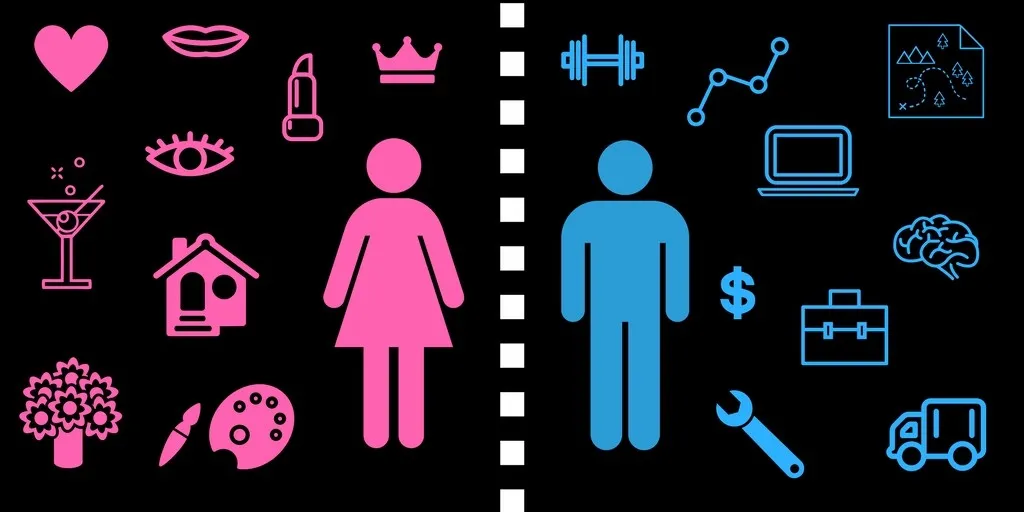THE BLUE AND PINK DIVIDE

How many of you would cringe at the prospect of being put in a tiny box and then never allowed to escape its confinements of it no matter how scary, dark or suffocating it might be? I don�t many think you would jump up and down with joy and excitement. In a matter of seconds, you would be struggling, gasping for air to save yourself. How would you feel if I told you that is how millions of young children at a tender age feel and their agony goes unnoticed? I want to pose another question. Have you gone shopping for children�s toys? I think a lot of you probably don�t know the first thing when it comes to shopping for little children even if you have siblings or cousins that you love and adore dearly.
Let me give you a sense of what the aisle of children�s toys looks like at a general store. In most stores, and this is true even for some popular online retailers, toys are segregated in aisles based on sex. Aisles for girls, more often than not are painted in bright pink, stacked with small-life like Barbie and miniature kitchens and for boys, you have blue aisle covered with building blocks and transformers. About 4 years ago Target, a popular retail chain in America announced that they wanted to get rid of these blue and pink backdrops and aim for a more gender-neutral environment for young shoppers.
I was extremely excited obviously, as you might have guessed already by now to know about this information but some people were downright angry, fuming with outrage. Some of these customers flooded the FaceBook page of Targets with comments like �This is unacceptable, boys and girls would be lost in stores unsure of what they should buy�. Now if you resonate with those customers and think that was unnecessary and stupid, then hear me out. Markings of Gender, especially in stores aren�t uncommon. They�ve been used to communicate the ideas of gender, since the inception of retail shopping. Toys in those aisles also communicate our understanding of gender, with toys for girls heavily centred around the ideals of beauty, nurturing and domesticity (hence Barbie and mini-kitchens) and toys for boys had the appeal of action, aggression and excitement. With a little bit of research, you would come to know that in the early 70s were not segregated on the basis of gender. Consumers didn�t have boys or girls� toys; they were just toys. If you�re anything like me this would stir something up inside of you a little. Over the past decades, marketing has increasingly become gendered, resorting to these stereotypes to market their products. What these toys do, is essentially communicate the expectations we have from our boys and girls and what we want them to do when they grow up. It�s not strange to find young girls reaching for toys meant for boys while shopping. Building blocks, pistols, and transformers are both exciting and interesting to play with. I believe it�s about time that we stop marketing based on our ideas of gender, and make a room for everyone. Nobody should be put in the tiny boxes of stereotypes and made to suffocate till they pass out.
Comments

Leave Comment


 SHREYANSH YADAV
SHREYANSH YADAV 


No Comments ...